The World Bids Farewell to a Legend: Frank Gehry (1929–2025)
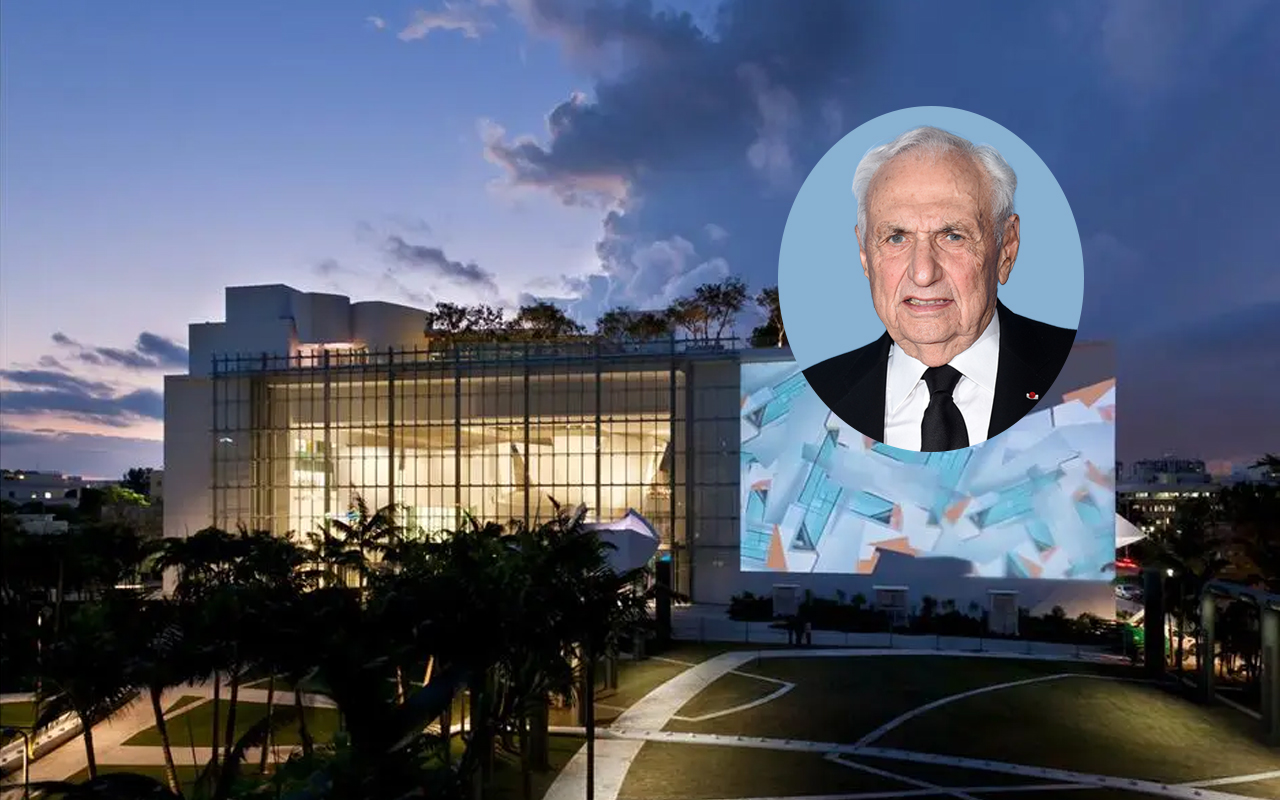

On December 5, 2025, the architectural world lost one of its true giants. Gehry Partners LLP confirmed that Frank Gehry — the visionary behind some of the most iconic buildings of the late 20th and early 21st centuries — passed away in Santa Monica at age 96.
Gehry’s work redefined what buildings could be: not just functional spaces, but sculptures, landmarks, emotional landmarks embedded in the cultural life of cities.
Global legacy: From Bilbao to LA and beyond
Gehry’s name became synonymous with daring, inventive architecture — from the titanium-clad swoops of the Guggenheim Museum Bilbao (1997) to the stainless-steel sails of the Walt Disney Concert Hall in Los Angeles (completed 2003).
His ability to blend artistry with functionality, to make buildings that were both theatrical and humanly accessible, earned him the top honors of his field — including the Pritzker Architecture Prize.
Though some critics viewed his “starchitect” approach as more spectacle than substance, many of his works still stand as proof that architecture can reshape not only skylines — but how people experience cities.
A Miami Beach touch: Gehry’s local footprint
Even here in South Florida — where pastel Deco facades and glass towers often dominate — Gehry left his mark. His most significant contribution to the region is the New World Center in Miami Beach, which officially opened in January 2011.
- The New World Center serves as the home of the New World Symphony, America’s orchestral academy. It includes a 756-seat concert hall and a series of rehearsal and practice rooms.
- The building is wrapped in a clean glass-and-white-plaster exterior — a deliberate choice to harmonize with Miami Beach’s architectural vernacular, rather than impose a metal-heavy “Gehry-look.”
- Inside, however, the signature Gehry spirit thrives: a dramatic atrium, curved and sculpted interior spaces, and a design that emphasizes intimacy — no seat is more than thirteen rows from the stage, bringing audiences physically close to musicians.
- The Center also incorporates a 2.5-acre public park with a 7,000-square-foot outdoor projection wall. Through “wallcasts,” people can enjoy free concerts, movies, and visual arts beneath the Miami sky — an open-air invitation to art, accessible to all.
Because the New World Center is Gehry’s first and — to date — only completed Florida commission, it stands as a special bridge between his global legacy and Miami’s unique cultural fabric.
Beyond that, Gehry was also associated with plans to renovate the Bacardi Tower and its museum campus in Miami, reimagining the interiors and possibly adding a performing arts center — though that project never reached the same realized prominence as the New World Center.
Why the world — and Miami — will feel his absence
For decades, Gehry pushed the boundaries of what architecture could express. With each building, he made a statement: that form matters; that architecture can inspire awe, stir emotion, and become part of a city’s identity.
In Miami Beach especially, the New World Center continues to serve as a rare example of architecture — by a global master — designed specifically for the local climate, culture, and community. The plazas, film-style “wallcasts,” and openness to public life reflect how architecture can be democratic, not elitist.
His passing reminds us both of the power of “star” architects — and of the responsibility we have to preserve, celebrate, and build upon their work responsibly and inclusively.
Florida Ranked #1 Best State for Higher Education for 10th Straight Year
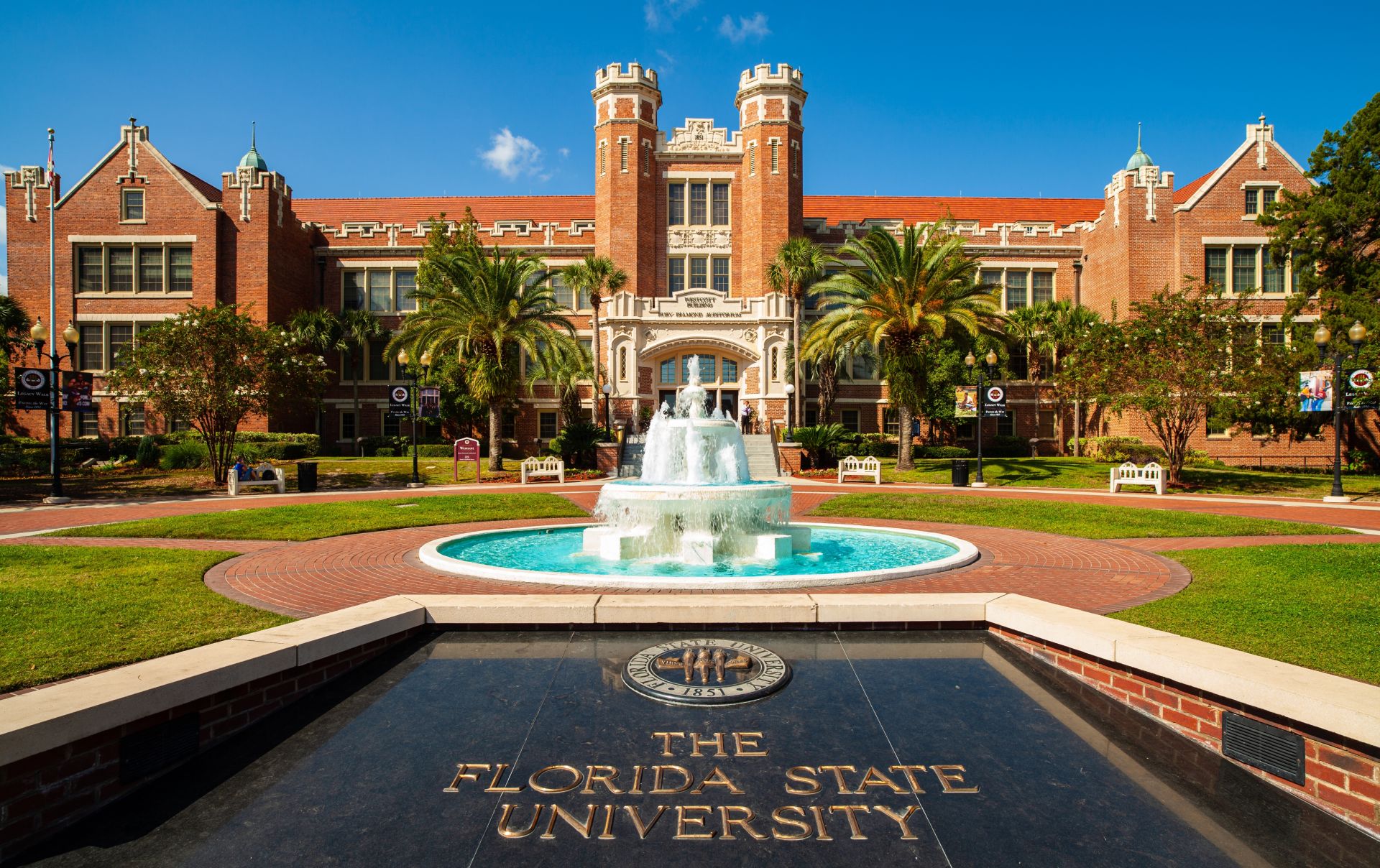

Florida has secured the No. 1 spot in U.S. News & World Report’s Best States for Higher Education for the tenth consecutive year—highlighting the state’s strategy of affordability, on-time graduation, and lower student debt across its public university system. Governor Ron DeSantis praised the milestone, noting that “Florida has held the #1 spot in higher education for ten years in a row and we have much more to do. Florida’s public universities offer the lowest in-state tuition in the country, allowing students to receive a quality education without a massive debt burden. More than three-quarters of Florida students graduate loan-free, and we ranked #1 for four-year graduation rates.” With seven Florida institutions now ranked among the Top 100 public universities nationwide, the state continues to prove that academic achievement and affordability can go hand in hand.
Why Florida Keeps the Top Spot
- Affordability: Among the lowest in-state tuition and fees in the country.
- On-time Completion: High four-year graduation rates across the system.
- Lower Debt Burden: A large share of students graduating without loans.
These outcomes reflect a statewide focus on performance funding, accountability, and cost containment across the 12-university State University System.
Seven Florida Public Universities in the U.S. News Top 100 (Public)
Florida reached a new milestone this cycle with seven public universities ranked among the nation’s Top 100 public universities.
| Institution |
Top Public Rank (2026) |
Notes |
| University of Florida (UF) |
#7 |
Top-10 public for eight consecutive years. |
| Florida State University (FSU) |
#21 |
Up two spots year-over-year. |
| University of South Florida (USF) |
#43 |
Up two spots; also noted for value and innovation. |
| Florida International University (FIU) |
#46 |
Recognized for social mobility. |
| University of Central Florida (UCF) |
#57 |
Up four spots year-over-year. |
| Florida A&M University (FAMU) |
#92 |
Also #1 Public HBCU seven years running. |
| Florida Atlantic University (FAU) |
#100 |
Debuts in the Top 100 (up three spots). |
Source: Florida Board of Governors
What It Means for Students & Families
- Value: Lower costs plus strong outcomes can reduce or eliminate student debt.
- Access: More institutions climbing in national rankings expands high-quality choices across the state.
- Momentum: Continued improvement supports talent attraction, research growth, and career pipelines in Florida.
MIAX Sapphire Launches in Miami, Cementing City’s Growing Role as Financial Powerhouse


Miami just scored a major win in its continued rise as a global financial hub. On September 16, 2025, Miami International Holdings (MIAX) officially opened MIAX Sapphire, a cutting-edge options trading floor located in the heart of Wynwood. The launch marks a significant milestone for both MIAX and the City of Miami, introducing a fully operational open-outcry trading floor—the first of its kind in Miami and only the second to open in the United States over the past five decades. This bold move positions Miami as a serious contender to legacy financial centers like New York and Chicago, signaling a new chapter in the city’s economic and real estate landscape.
Located on the ninth floor of the 545 Wyn building, MIAX Sapphire spans more than 38,000 square feet and features not just a bustling trading pit, but also modern office spaces, conference rooms, and even a dedicated Bloomberg Television broadcast studio. The trading floor was meticulously designed with optimal lighting, acoustics, and infrastructure to support the dynamic needs of market-makers and trading professionals. Already, firms like Citadel Securities, Susquehanna International Group, Jane Street, and others are actively quoting on-site, offering real-time liquidity in one of the most active asset classes in the world: U.S. equity options.
What makes MIAX Sapphire especially noteworthy is its ability to grant market participants access to 100% of the multi-listed options market. This further enhances Miami’s standing as a viable and attractive location for sophisticated financial activity. As Miami continues its transformation into “Wall Street South,” the presence of a physical trading floor adds an extra layer of institutional credibility to a city that has already attracted a flood of fintech startups, hedge funds, and venture capitalists in recent years.
The economic implications for Miami are significant. The establishment of a trading floor of this scale will generate high-paying jobs—not only for traders and market-makers but also for compliance officers, risk analysts, operations staff, and technical support teams. The ripple effect will benefit a wide array of adjacent industries, including law, accounting, cybersecurity, and commercial real estate. Additionally, Miami stands to gain from increased business travel and financial events, further bolstering the local hospitality, transportation, and service sectors.
From a real estate perspective, the impact of MIAX Sapphire’s launch could be profound. High-income professionals relocating or commuting to the city for trading-related roles will likely drive up demand for luxury housing in areas like Brickell, Coconut Grove, South of Fifth, and Surfside. Rental prices are expected to rise in tandem, particularly for high-end apartments and condos in nearby neighborhoods. Will MIAX Sapphire encourage traders and finance professionals from other cities to relocate to Miami? All signs point to yes. Miami’s tax-friendly environment—with no state income tax—is an undeniable draw for high earners accustomed to the burdens of places like New York and California. Add in year-round sunshine, a vibrant cultural scene, and rapidly improving infrastructure, and you have a formula that’s hard to beat. The presence of a physical trading floor also offers strategic advantages in latency-sensitive trades and face-to-face dealmaking, making Miami not just a lifestyle upgrade but a smart business decision.
MIAX Sapphire could very well mark the tipping point in Miami’s transformation from sun-drenched tourist destination to full-fledged financial powerhouse. In short, the opening of MIAX Sapphire isn’t just a financial milestone—it’s a major turning point for Miami’s economy, real estate market, and identity. As more trading desks, financial firms, and market professionals make their way south, Miami’s status as a global finance capital looks more certain than ever.
Blackstone Acquires EAST Miami Hotel at Brickell City Centre
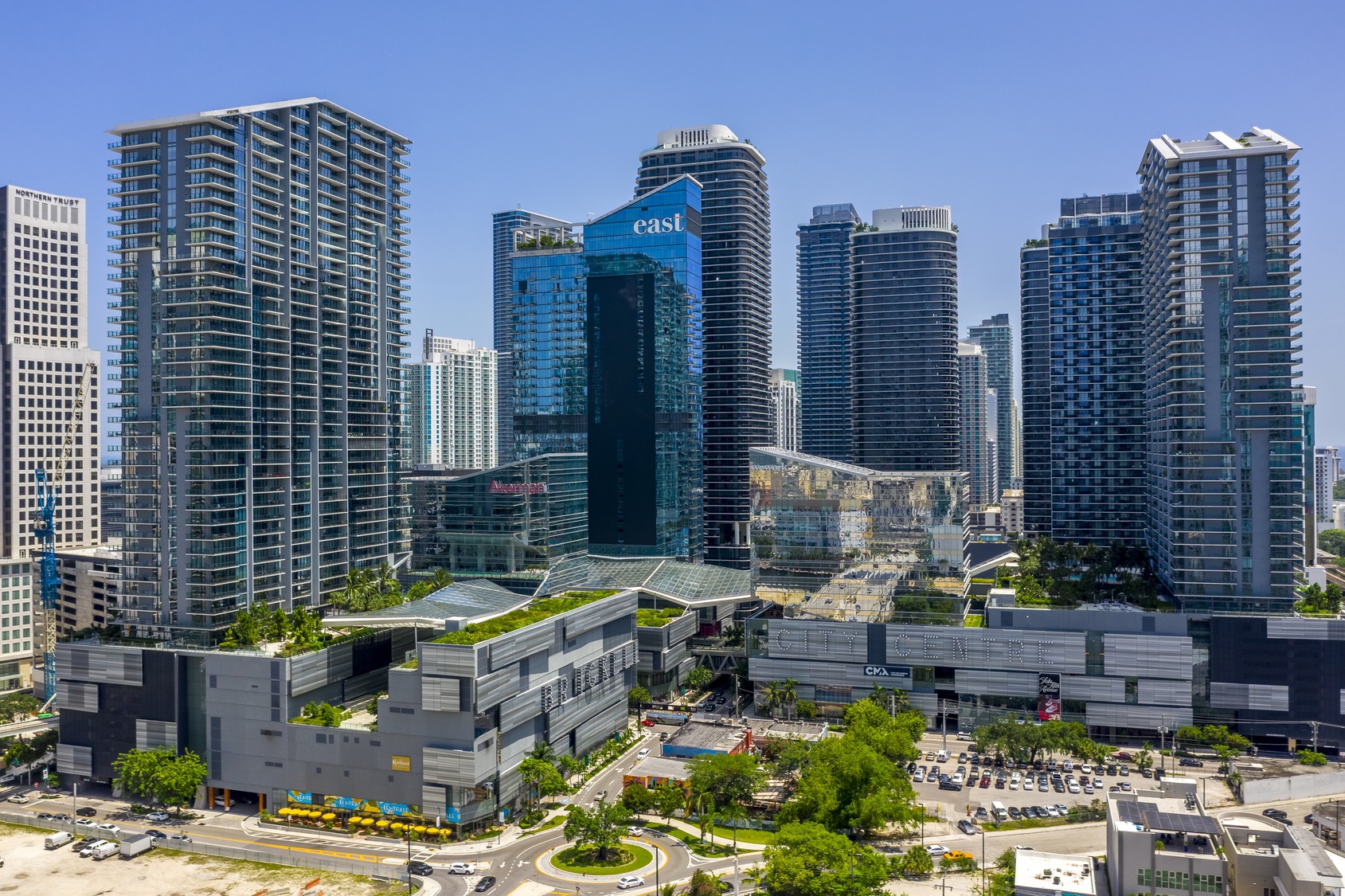

Miami’s hospitality market scored another major deal today with news that Blackstone Real Estate has acquired the EAST Miami hotel from Trinity Investments and Certares Real Estate Management. The 352-key property, which includes 89 serviced apartments, is the flagship hotel at Brickell City Centre, the $1.1 billion mixed-use development that has helped transform the heart of Miami’s financial district. Since opening in 2016, EAST Miami has become known for its sleek guestrooms, residences, and its iconic rooftop bar, Sugar, a staple of the city’s nightlife scene.
Trinity and Certares purchased the property in 2021 from Swire Properties for approximately $174 million. Deed records reflected a base price of $120.3 million, with the higher figure likely including furniture and fixtures. Under their ownership, the joint venture implemented operational and management enhancements that significantly boosted the hotel’s financial performance. Within the first full year, net operating income jumped by more than 60 percent, showcasing the strength of Miami’s hospitality rebound and their ability to reposition high-quality lifestyle assets. The sale also represents the first fully realized asset by Trinity GP Fund I, L.P., marking an important milestone for the firm.
For Blackstone, the deal underscores its growing conviction in the Miami market. Scott Trebilco, Senior Managing Director at Blackstone Real Estate, highlighted the neighborhood’s transformation, driven by strong population and employment growth as well as booming leisure and entertainment demand. The acquisition aligns with Blackstone’s broader South Florida strategy, which includes ownership of the W Hotel Fort Lauderdale and a recent $300 million loan to support renovations at the Ritz-Carlton Key Biscayne.
The acquisition of EAST Miami not only strengthens Blackstone’s foothold in the region but also reflects the rising prominence of Brickell as a global business and lifestyle hub. What was once a strictly financial district is now a dynamic neighborhood attracting international investors, luxury retailers, and world-class hospitality brands. By securing one of its crown-jewel hotels, Blackstone has placed a strong bet on the continued growth and appeal of Miami’s hospitality sector.
Miami Leads Major U.S. Cities as Strongest Buyer’s Market, Realtor.com Reports
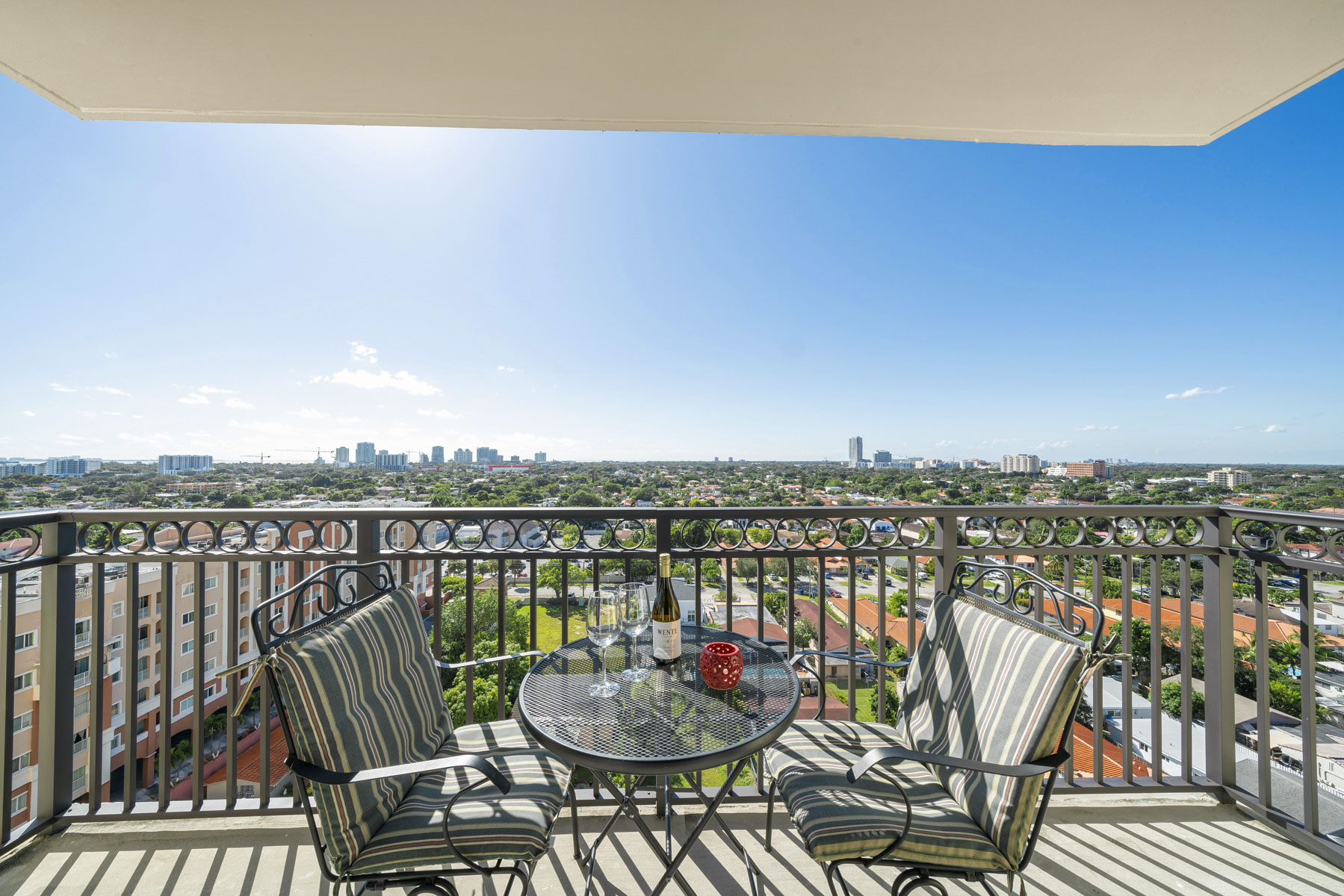

Miami’s housing market has officially tipped in favor of buyers, according to the latest Realtor.com press release and its August 2025 Monthly Housing Market Trends Report. The national housing landscape reached a significant milestone last month with 5.0 months of supply—marking the first balanced summer market since 2016. But Miami stood out with a whopping 9.7 months of supply, the highest among the 50 largest U.S. metros. Other metros joining Miami in buyer’s market territory include Austin, Orlando, New York City, Jacksonville, Tampa, and Riverside, California.
This shift means buyers in Miami now hold greater negotiating power, with more inventory to choose from and a higher likelihood of price reductions. In fact, Miami’s inventory situation reflects deeper issues: homes are sitting on the market longer, and sellers increasingly appear reluctant to adjust their prices. In July, approximately 57 homes were delisted for every 100 new listings in Miami—far more than in any other metro. This surge in delistings shows that many sellers would rather pull their properties from the market than sell at discounted prices. It’s a clear signal that pricing expectations are out of sync with current demand.
Nationally, the August 2025 data reveals broader softening trends. Active listings rose 20.9% year-over-year, marking the fourth straight month with over one million active listings on Realtor.com. However, inventory remains 14.3% below pre-pandemic levels—an improvement from June’s 12.9% gap. New listings increased modestly, up 4.9% year-over-year, but have declined for four straight months on a month-over-month basis. Homes are also taking longer to sell, with a median time on market of 60 days—seven days longer than last year and five days longer than in July.
Price trends provide more evidence of cooling. The national median list price remained flat year-over-year at $429,990 but declined 2.2% month-over-month. Approximately 20.3% of all active listings in August had their prices reduced, and delistings jumped by 57% compared to a year earlier. These patterns are especially concentrated in southern markets like Florida, where inventory gains have been most substantial.
Even as the broader Miami market cools, the luxury sector remains insulated—thanks to the dominance of cash buyers. Realtor.com data reveals that more than half of all Miami homes priced over $1 million were purchased with cash in recent months. The breakdown is especially telling: 53.5% of homes between $1M–$5M, 54.1% of homes between $5M–$10M, and 58.6% of homes above $10M closed in all-cash transactions. In the ultra-luxury segment—homes priced above $2,000 per square foot—cash accounted for a staggering 83% of condo purchases and 79% of single-family home sales. These figures highlight that while the broader market is cooling, luxury sellers still retain leverage due to the strength of all-cash demand.
For buyers, the Miami market now offers more choice, more negotiating power, and less urgency. Inventory is high, homes are sitting longer, and sellers in many price brackets are growing increasingly flexible—either reducing prices or delisting altogether. This presents a rare opportunity for buyers to enter the market with leverage not seen in years. However, for sellers, particularly outside the luxury segment, the new environment may require more realistic pricing strategies. Those who refuse to adjust may find themselves among the growing number of delisted properties.
In short, Miami’s housing market isn’t just shifting—it’s leading the nation as the strongest buyer’s market, offering house hunters more leverage than any other major U.S. metro.
U.S. Housing Market Hits Record $55.1 Trillion While Florida Values Drop $109 Billion
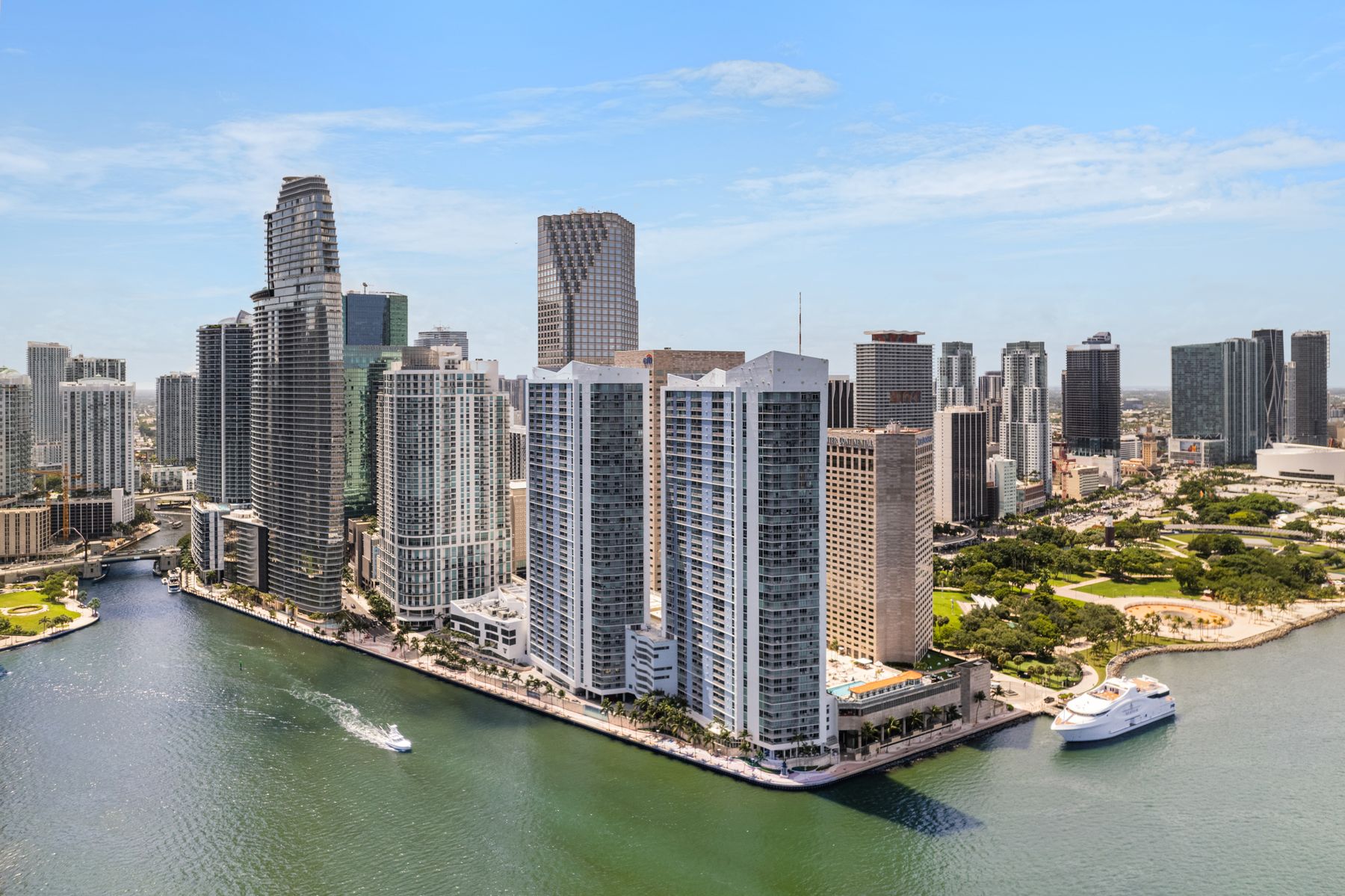

The U.S. housing market has reached a record value of $55.1 trillion, according to a new report released by Zillow on September 8, 2025. Since 2020, the market has grown by more than $20 trillion, fueled largely by rising home prices and the steady pace of new construction. However, growth has slowed significantly in the past year, with the market adding just $862 billion, a sharp contrast to the rapid gains of the pandemic era.
Florida, one of the fastest-growing housing markets over the last several years, is now showing signs of weakness. Zillow’s analysis revealed that Florida’s housing market actually lost $109 billion in value over the past year. While the state added more than $1.6 trillion in housing value between 2020 and mid-2025, recent declines in home prices across key metropolitan areas have offset earlier gains. Rising insurance costs and affordability challenges are eroding some of Florida’s competitive edge, particularly as buyers become more price-sensitive.
Major Florida cities are leading the decline. Home values in Miami fell 4.6% year over year, while Tampa dropped 6.2% and Orlando declined 4.3%. These decreases come at a time when many U.S. metros are stabilizing or even rebounding, underscoring Florida’s unique challenges. Sellers in the Sunshine State are increasingly resorting to price cuts, and homes are spending longer on the market, giving buyers more leverage than in recent years.
Despite these declines, new construction continues to play a stabilizing role in Florida’s housing sector. Nationally, new builds have added $2.5 trillion in value since 2020, and about 20% of Florida’s growth during that time came from new construction. This ongoing development has helped offset demand pressures, particularly in high-growth regions, though it has not fully shielded the state from recent declines in resale home values.
As of mid-2025, the average home value in Florida stands at $382,136, down 4.8% from a year earlier. Inventory is rising, with more than 206,000 homes currently on the market and over 36,000 new listings added in July alone. Homes are taking longer to sell, with the median time to pending now at 53 days. The gap between list prices and sale prices is widening as well, with the median sale-to-list ratio at just 0.971, signaling a shift toward a buyer-friendly environment.
For Florida homeowners, the message is clear: the market has cooled considerably from its pandemic-era highs, and expectations may need to be adjusted accordingly. Buyers, on the other hand, may find more negotiating room and better opportunities than they have had in years. While the broader U.S. market sets new records, Florida’s real estate tells a different story—one of correction, recalibration, and the possibility of renewed balance ahead.
More Unemployed Than Job Openings for First Time Since April 2021 — What It Means for Mortgage Rates and the Housing Market


For the first time since April 2021, the number of unemployed Americans has surpassed the number of available job openings. According to July’s Job Openings and Labor Turnover Survey (JOLTS), job openings fell to about 7.18 million, while the pool of unemployed workers slightly exceeded that figure. This reversal signals a meaningful cooling in the labor market after years of tight conditions, raising new questions about the Federal Reserve’s next move and what this shift could mean for mortgage rates and the housing market.
Mortgage rates have already begun to reflect the softer economic backdrop. The average 30-year fixed mortgage rate recently dipped to under 6.5%, its lowest level in nearly a year. However, despite cheaper financing, many potential buyers remain cautious. Applications for new home loans fell 3% from the previous week, according to the Mortgage Bankers Association, showing that affordability challenges and broader economic uncertainty are still weighing on demand. On the other hand, refinancing activity has started to climb, suggesting that homeowners are beginning to take advantage of the drop in rates.
The key driver behind these moves is the expectation that the Federal Reserve will shift toward cutting interest rates. With the labor market cooling and inflation trending lower, bond yields have fallen as investors anticipate Fed action. Markets are now pricing in a strong likelihood of a 25-basis-point cut at the Fed’s September meeting, with the potential for further easing later in the year. Since mortgage rates are closely tied to Treasury yields, any sustained decline in bond yields could translate into even lower mortgage rates heading into late 2025 and early 2026.
For the housing market, the implications are significant. Lower borrowing costs could gradually restore affordability, especially for first-time buyers who have been priced out during the high-rate environment of the past two years. As mortgage rates trend downward, more buyers may return to the market, creating fresh demand for listings. At the same time, sellers are beginning to adjust, with some lowering asking prices or offering concessions to meet the market. This dynamic could lead to a more balanced environment after years of volatility.
Still, challenges remain. While declining mortgage rates are a welcome relief, home prices in many markets remain elevated, and wage growth is slowing alongside the labor market. Buyers may be more selective, and sellers may need to reset expectations. The near-term outlook suggests a housing market in transition—one where lower rates could unlock pent-up demand but broader affordability and economic confidence will ultimately determine the pace of recovery.
Bottom line: For the first time in over four years, unemployed workers now outnumber job openings, marking a turning point in the labor market. This shift is already helping to push mortgage rates lower, with further declines possible if the Fed follows through with rate cuts. For homebuyers and sellers alike, the coming months could bring new opportunities, but also continued adjustments as the housing market responds to a changing economic landscape.
30-Year Fixed Mortgage Rate Dips Below 6.50% for the First Time Since October 2024


In a significant development for the housing market, the average 30-year fixed mortgage rate has dipped below 6.50%—a threshold not seen in nearly a year. According to Mortgage News Daily’s daily index, this is the first time rates have fallen under 6.50% since October 3, 2024, when the rate briefly hit 6.49%.
Why This Matters
This drop is more than symbolic. Since July 29, 2025, when the 30-year fixed rate stood at 6.77%, rates have fallen 0.28 percentage points, landing today, September 3, 2025, at 6.49% following a brief uptick to 6.53% on Monday. The movement reflects improved economic signals, softening inflation, and increased investor demand for Treasurys—all of which are contributing to lower mortgage-backed securities yields and, in turn, more favorable mortgage pricing.
What This Means for Buyers & Refinancers
- Increased Affordability: A rate of 6.49% allows buyers to qualify for more home—about $20,000 more in purchase price for the same monthly payment compared to when rates were near 7%.
- Refi Opportunity: Homeowners with rates above 7% could save $150–$250/month on a $300,000 loan by refinancing at today’s levels.
- Market Confidence: Sub-6.50% rates may renew confidence among sidelined buyers, potentially boosting fall home sales activity.
What’s Driving the Drop
Several factors have contributed to the 0.28-point decline over the past month:
- Weaker job growth in July, signaling an easing labor market
- Stable Treasury yields near 4.2%, driven by investor demand and recessionary caution
- Speculation that the Fed may begin loosening monetary policy sooner than previously expected
⏳ A Narrow Window?
Industry experts don’t expect rates to plummet, but they do see the possibility of further modest declines if economic data continues to soften. Most forecasts peg rates in the 6.25%–6.75% range through the remainder of 2025. This drop below 6.50% could prove temporary if inflation surprises to the upside or the bond market reverses course.
Historical Context
| Date |
30-Year Fixed Rate |
Source |
| July 29, 2025 |
6.77% |
Mortgage News Daily |
| Oct 3, 2024 |
6.49% |
Mortgage News Daily |
| Sept 2, 2025 |
6.49% |
Mortgage News Daily |
Final Thoughts
Whether you’re house hunting or considering refinancing, a rate below 6.50% offers rare breathing room in today’s high-price housing market. With fall inventory expected to pick up, now may be the moment to act. Locking in a favorable rate today could pay dividends for years to come.
Booze on the Beach? Miami Beach Weighs Alcohol Pilot Program


Miami Beach is weighing a proposal that could change the city’s relationship with its iconic shoreline—by allowing alcohol sales directly on the sand. The City Commission is considering a one-year pilot program that would permit regulated sales of beer, wine, and cocktails at designated beachfront kiosks. If approved, the program would authorize Boucher Brothers, the city’s longtime beach concessionaire, to serve alcoholic beverages at specific areas between Fifth and 14th Streets, as well as at 21st Street, during set hours from 11 a.m. to 6 p.m. daily.
The proposal aims to bring a level of control and oversight to a practice that already occurs unofficially. While drinking alcohol on the beach is currently prohibited, enforcement has been inconsistent, and many beachgoers routinely bring their own beverages. City officials hope the pilot program could reduce the prevalence of unregulated alcohol consumption and curb the activities of unauthorized vendors, while also creating a new revenue stream from beachfront concessions.
According to a city memo, the proposed agreement would generate substantial revenue for Miami Beach. The city would receive 18% of alcohol sales revenue up to $5 million and 20% of revenue beyond that, with a minimum guaranteed payment of $250,000 annually. In addition, the proposal includes potential monetary contributions to the Miami Beach Bandshell, helping fund local cultural programming.
Supporters of the initiative argue that it offers a pragmatic solution to a longstanding issue. By permitting sales in a controlled environment with licensed staff and clearly defined hours, the city can manage beach drinking more effectively while offering a premium amenity to tourists. Opponents, however, worry that formalizing alcohol sales could reinforce Miami Beach’s party-town image—something city leaders have worked hard to rebrand in recent years. Critics have also voiced concerns about public safety, noise, and the potential for increased rowdiness in family-friendly areas.
The decision now rests with the City Commission, which is expected to vote on the pilot program soon. If it moves forward, city staff will be required to submit quarterly reports detailing the program’s impact, including safety metrics, business activity, and public sentiment. These evaluations will help determine whether the policy should be expanded, modified, or discontinued after the one-year trial period.
This pilot represents a broader shift in how Miami Beach approaches its evolving identity—balancing the demands of tourism with the quality-of-life concerns of residents. It also highlights the city’s willingness to test creative solutions in pursuit of both economic growth and improved public management. Whether this experiment becomes a permanent fixture remains to be seen, but it signals Miami Beach’s openness to reimagining how its world-famous shoreline can serve both visitors and the local community.
![]()